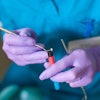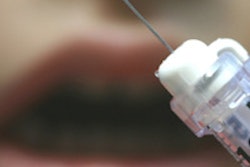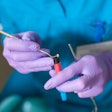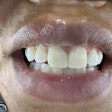U.S. officials recently lowered the recommended dosage of fluoride in water from 1.2 to 0.7 parts per million -- a limit that previously had been several times higher.
But detecting fluoride at such miniscule levels can be tricky, according to Texas A&M University chemist François Gabbaï, PhD.
So he and his research team have focused on building a solution -- organometallic molecules that emit fluorescence when they are mixed with water containing fluoride. The new tool could be used to monitor water supplies and ensure safety standards.
"The sensors have to physically make contact with fluoride, but we had a fundamental challenge: Water serves as a very efficient buffer and keeps the sensor away from the fluoride anion," said Gabbaï, a professor in the department of chemistry. "So we make organometallic compounds that have a high affinity for small anions. These compounds are Lewis acids -- molecules that are lacking in electrons -- that capture fluoride and brighten when they find it."
Gabbaï recently earned a $440,000 National Science Foundation grant to further develop the technology.



















